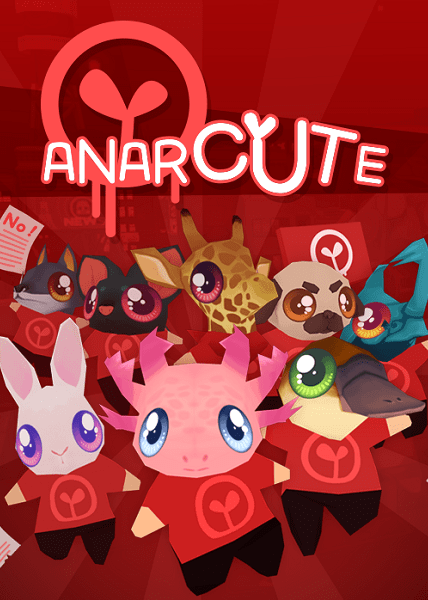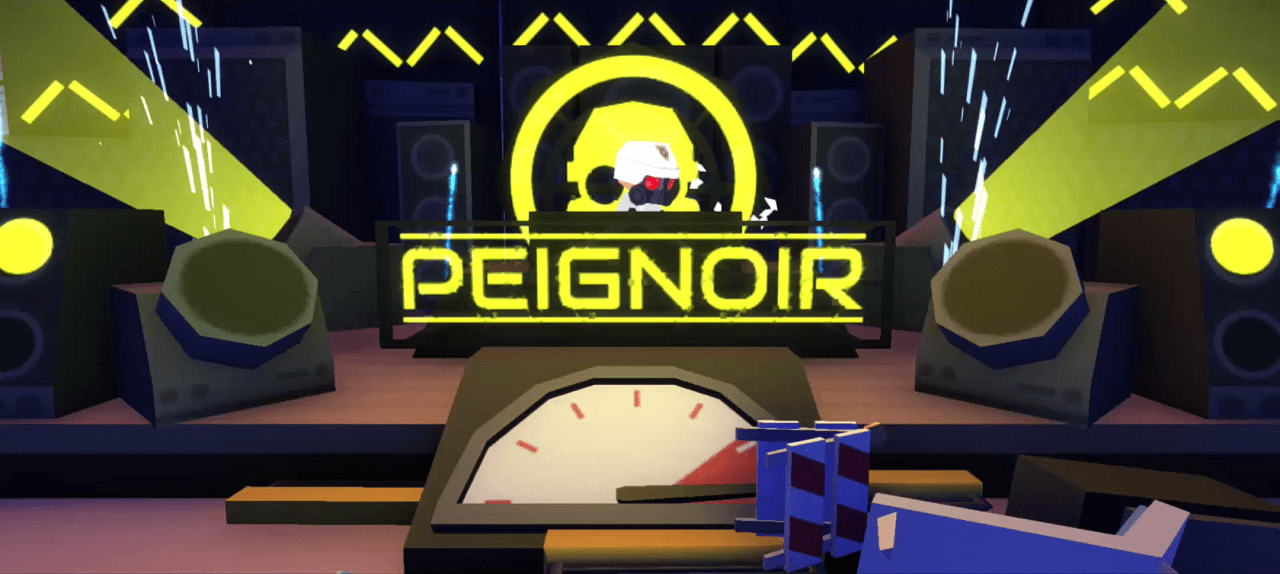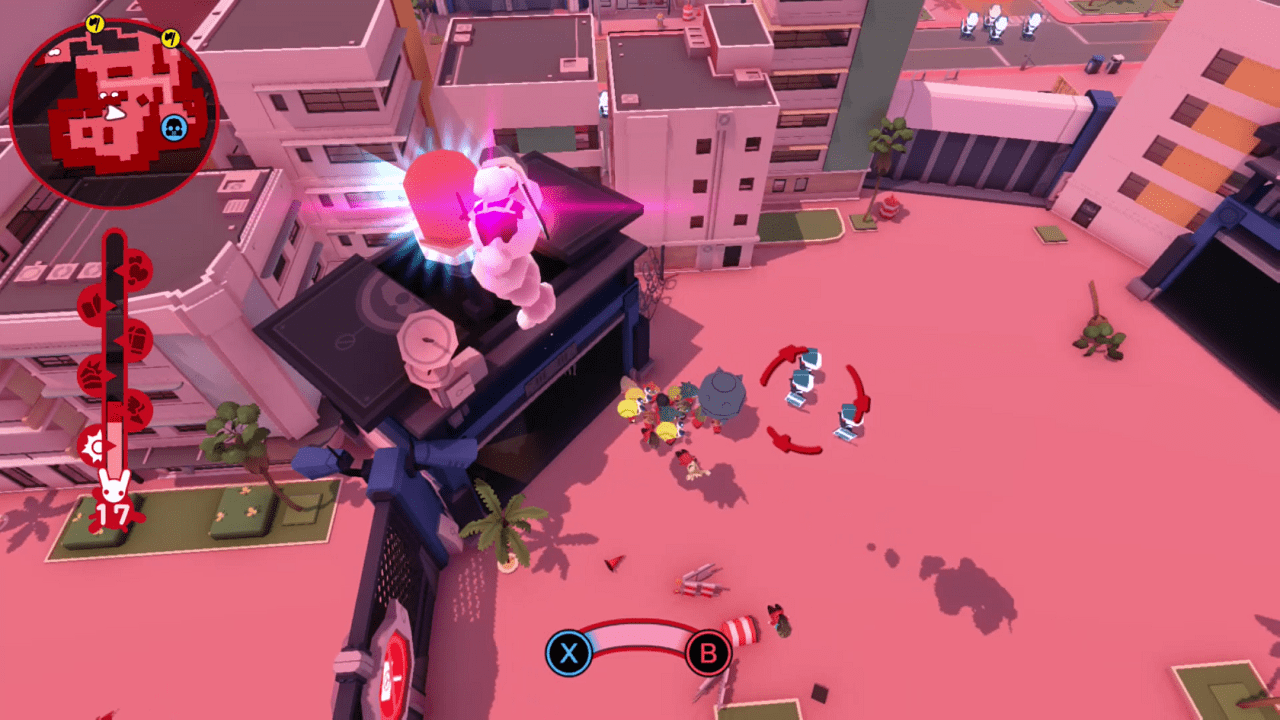
Anarcute – A joyous blend of Animal Crossing, Pikmin, and French civil unrest
****
Reviewed July 11, 2016 on Xbox One
Leave a comment on Giant Bomb
Disclosure: An Xbox One download code was provided by the publisher for this review
At first glance, Anarcute sounds like a terrible idea - it is difficult to think of a more clashing series of words than "cute riot simulator". Yet Anarcute somehow makes it work; good gameplay and a great sense of style come together to produce an engaging experience, albeit one with dark undertones.
Set in a kawaii dystopia, Anarcute has the player control a crowd of rioters through a series of levels, battling the Brainwash Patrol, an ever present entity who seemingly control the world through force. The core gameplay reminded me of Pikmin - rather than controlling an individual character, the player controls the crowd as a whole. Starting from a small number, the crowd grows as additional rioters are discovered in the level, unlocking new abilities at certain crowd sizes.
The goal in most levels is simple; generally destroy certain buildings or capture certain flags. To do so, the Brainwash Patrol in these locations must be eliminated, and the game offers a number of tools for doing so - the crowd can directly attack, most objects in the game can be picked up and thrown, limited use weapons can be picked up from fallen enemies and reused, and buildings can be destroyed. Though the combat is fairly straight-forward, I found it quite satisfying. The trade-off in the various approaches made it fun to tackle each level. For example, a direct attack is going to get me through the level faster, but I know I will lose some members of my crowd. I could gather objects to throw at the enemies, and take them out without risking the riots, or I could try a hybrid approach - throw a item to pull some enemies away from the rest, but then attack directly. This push and pull of crowd size verses time taken in the level works well.
This is supported by good level design and enemy variety. The game starts off simple, with just melee enemies and no environmental hazards (perhaps a little too simple - the first few levels are not especially interesting). As the game progresses, new enemy types, such as helicopters, drones, and ranged attacks, and environmental hazards, such as mines, laser beams, and shock towers, are slowly introduced and ramp up the difficulty. This occasionally results in the difficulty feeling a little uneven, as there is frequently a trick to dealing with a new hazard that isn't immediately apparent.
The latter half of the game takes on a sort of stealth-puzzle feel: all enemies have vision cones, and many can be avoided. New areas of the level can be opened up via switches or, for example, by destroying certain walls or buildings. This generally means there is a more elegant path through the level (instead of just attacking everything), and I found it enjoyable to approach levels in this manner. The game also features a few levels that I would consider pure stealth - a single rioter is tasked with something like disabling a series of antennas. Though this rioter can engage in combat, this is unwise as they will almost certainly lose. These levels provided a nice change of pace from the more hectic crowd levels.
At the end of each area (there are five total), there is a boss battle. From the first one, I wasn't expecting too much out of these, as it was a fairly standard affair. However, I was pleasantly surprising to discover that each boss fight had its own unique gimmick, and figuring out the right approach was a major part of each battle. Most importantly, the boss battles were more challenging that the standard levels, but still felt fair - once I had learned the approach to take, it was relatively easy to execute, and the game never felt like it was being difficult just for the sake of it.
The game's main strength is in its style. From the Animal Crossing-esque rioters, the vibrant kawaii art style, to the excellent music, there is a certain gleefulness to the game, which one may not have expected from a riot simulator. There is a charm to the game, and it reminded me of titles such as Katamari Damacy and Lovely Planet. Nice touches, such as putting an audio filter on the music when the game is paused, are appreciated.
My main complaints with the game are both fairly minor, though did hinder my experience to some degree. Firstly, the camera control is on the right analogue stick, with left/right rotating the view, and up/down zooming in and out. I got used to it over the course of the game, but it never felt quite right to me. I frequently tried to move the view around to get a better look at an area by pressing up/down on the stick, but that just zooms in and out. Zooming in all the way unexpectedly during combat resulted in unnecessary deaths, and the ability to look around the map more would certainly have been helpful.
Also on controls, the lock-on distance for throwing objects felt rather short. As this is not a twin-stick game, it is impossible to throw objects whilst running away unless the game has locked-on to the enemy. I frequently found myself running from enemies, and wanting to throw items to cause damage, but unable to do because I was just outside of the lock-on range.
On the whole though, these complains did not significantly reduce my enjoyment of the game. Anarcute is a fun, charming game, and I enjoyed the six or so hours I spent with the game. Though not flawless, and occasionally frustrating, it is easy to recommend.


